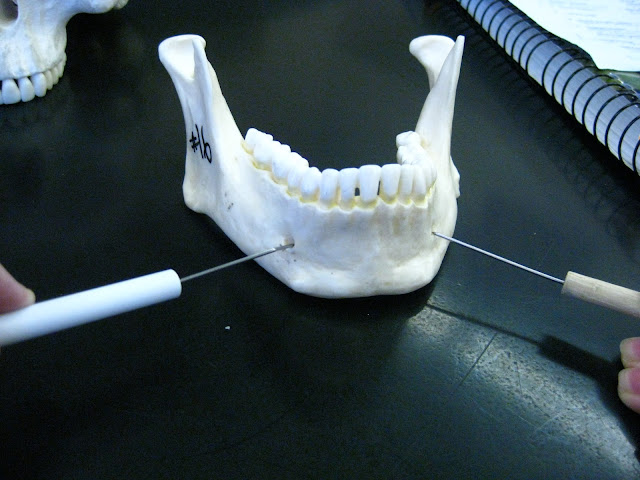The probe is pointing to the zygomatic process of *temporal* bone (NOT "of zygomatic bone").
Bone terms:
process - any protuberance, "bump", or "hill" of a bone; any other structure of a bone that sticks out.
a few sub-types of "process": trochanter, crest, tubercle, condyle, epicondyle, tuberosity, line, spine.




